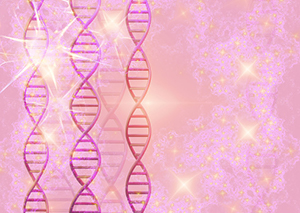In a U.S. population-based, case-control study reported in The New England Journal of Medicine, Hu et al identified the prevalence of and risk associated with germline pathogenic variants in established and candidate breast cancer predisposition genes.
Study Details
The study involved 32,247 women with breast cancer (case patients) and 32,544 without breast cancer from 12 population-based studies in the U.S. Cancer Risk Estimates Related to Susceptibility (CARRIERS) consortium that were not enriched with patients with a family history or early onset of disease. Sequencing using a custom multigene amplicon-based panel was performed to identify germline pathogenic variants in 28 cancer predisposition genes, including 12 established (ATM, BARD1, BRCA1, BRCA2, CDH1, CHEK2, NF1, PALB2, PTEN, RAD51C, RAD51D, and TP53) and 16 candidate genes (BLM, BRIP1, CDKN2A, ERCC3, FANCC, FANCM, MLH1, MRE11A, MSH2, MSH6, NBN, RAD50, RECQL, RINT1, SLX4, and XRCC2).

Photo credit: Getty
Findings for Established Predisposition Genes
Pathogenic variants in 12 established breast cancer predisposition genes were found in 5.03% of case patients vs 1.63% of controls. Prevalence among case patients was similar among White, Black, and Hispanic patients, and lower among Asian patients (1.64%). Among case patients, the highest prevalence was found for BRCA2 (1.29%), CHEK2 (1.08%), and BRCA1 (0.85%). Lower prevalence was found for ATM (0.78%), PALB2 (0.46%), BARD1 (0.15%), RAD51C (0.13%), RAD51D (0.08%), NF1 (0.06%), TP53 (0.06%), CDH1 (0.05%), and PTEN (0.02%).
In analysis adjusted for study, age, family history of breast cancer, and race/ethnicity, pathogenic variants in BRCA1 (odds ratio [OR] = 7.62, P < .001) and BRCA2 (OR = 5.23, P < .001) were associated with highest risk of breast cancer in cases vs controls, with variants in PALB2 (OR = 3.83, P < .001) and CHEK2 (OR = 2.47, P < .001) being associated with more moderate risk. Odds ratios were > 1 but did not achieve significance for variants in CDH1 (2.50, P = .06), NF1 (1.93, P = .09), RAD51D (1.72, P = .12), BARD1 (1.37, P = .18), and RAD51C (1.20, P = .44). Risk could not be calculated for variants in PTEN or TP53 due to low numbers of events.
KEY POINTS
- Germline pathogenic variants of established predisposition genes were found in 5.03% of case patients vs 1.63% of controls.
- Variants in BRCA1, BRCA2, PALB2, and CHEK2 were associated with the highest risk of breast cancer.
Among case patients with known receptor status, significantly increased risk of estrogen receptor (ER)-positive breast cancer (n = 18,428) was associated with variants in ATM (OR = 1.96), BRCA1 (OR = 3.39), BRCA2 (OR = 4.66), CDH1 (OR = 3.37), CHEK2 (OR = 2.60), and PALB2 (OR = 3.13). Significantly increased risk of ER-negative disease (n = 3,805) was associated with variants in BARD1 (OR = 2.52), BRCA1 (OR = 26.33), BRCA2 (OR = 8.89), PALB2 (OR = 9.22), and RAD51D (OR = 3.93). Significantly increased risk of triple-negative disease (n = 1,463) was associated with variants in BARD1 (OR = 3.18), BRCA1 (OR = 42.88), BRCA2 (OR= 9.70), and PALB2 (OR = 13.03). Risk could not be calculated for some variants in each category due to low numbers of events.
In an analysis of the prevalence of pathogenic variants in ATM, BRCA1, BRCA2, CHEK2, and PALB2 according to age at diagnosis in case patients and at time of study selection in controls, it was found that prevalence of variants in BRCA1 and BRCA2 among case patients decreased markedly after age 40. Additionally, prevalence of variants in ATM, CHEK2, and PALB2 exhibited a constant and limited decline from age 40 through age 85. In analysis among White patients, variants in ATM, BRCA1, BRCA2, CHEK2, and PALB2 were each associated with lifetime absolute breast cancer risk > 20% by age 85, with variants in BRCA1 or BRCA2 being associated with lifetime risk of approximately 50%, and those in PALB2 with lifetime risk of approximately 32%.
Findings for Candidate Predisposition Genes
Prevalence rates for pathogenic variants of candidate predisposition genes among case patients ranged from 0.02% for CDKN2A and MSH2 to 0.32% for BLM. No significantly increased risk of breast cancer was associated with any of the 16 candidate predisposition genes, including the mismatch repair genes MLH1, MSH2, and MSH6, either overall or according to ER status (all P > .05). As related by the investigators, it is also noteworthy that no increased risk was associated with any pathogenic variant in NBN (OR = 1.05, 95% confidence interval [CI] = 0.71–1.56), the NBN c.657_661del5 founder pathogenic variant previously associated with increased risk (OR = 0.93, 95% CI = 0.52–1.68), or c.657_661del5 homozygous for the GG allele of c.553.
The investigators concluded, “This study provides estimates of the prevalence and risk of breast cancer associated with pathogenic variants in known breast cancer predisposition genes in the U.S. population. These estimates can inform cancer testing and screening and improve clinical management strategies for women in the general population with inherited pathogenic variants in these genes.”
Disclosure: The study was funded by the National Institutes of Health and the Breast Cancer Research Foundation. For full disclosures of the study authors, visit nejm.org.

